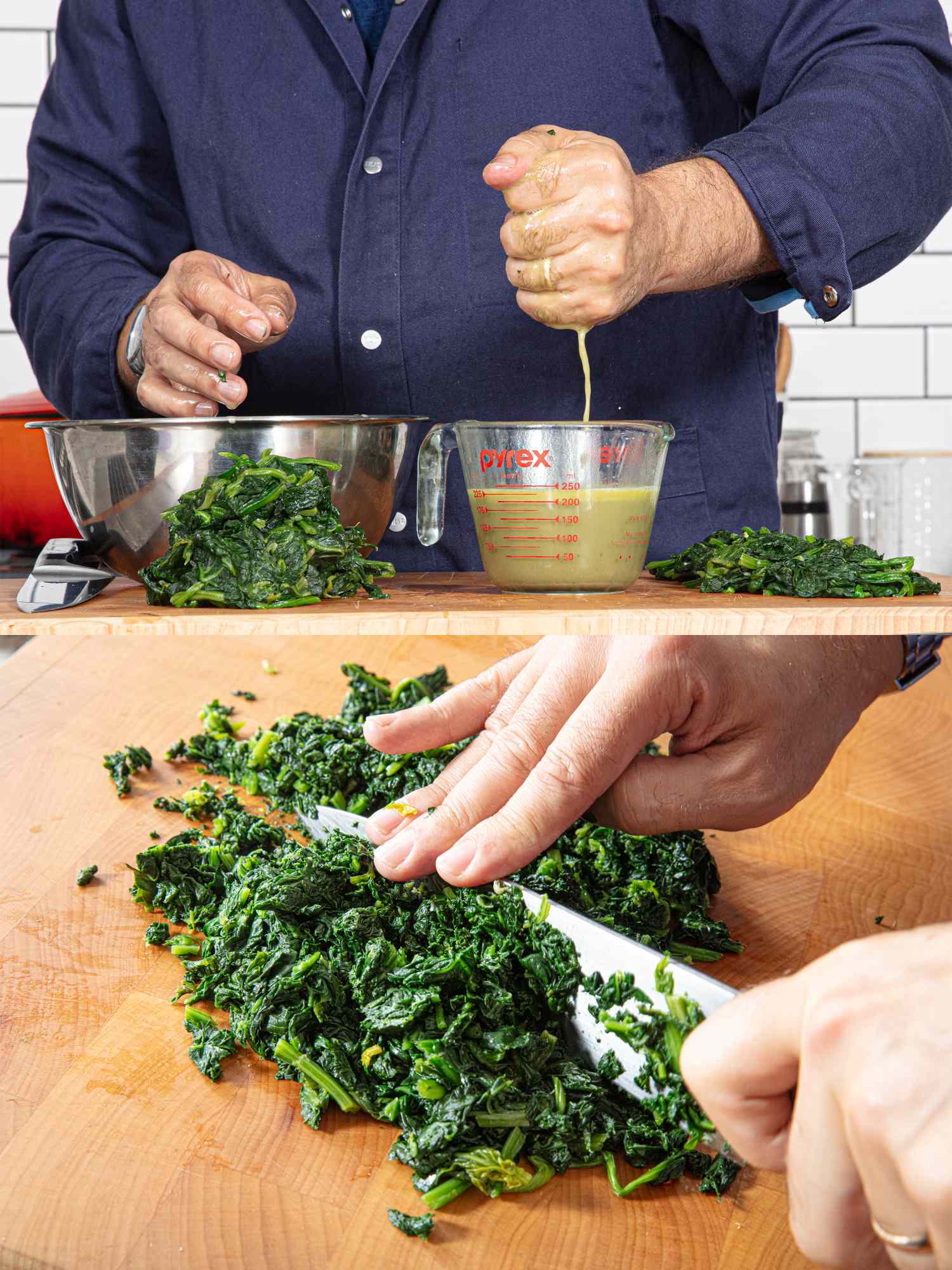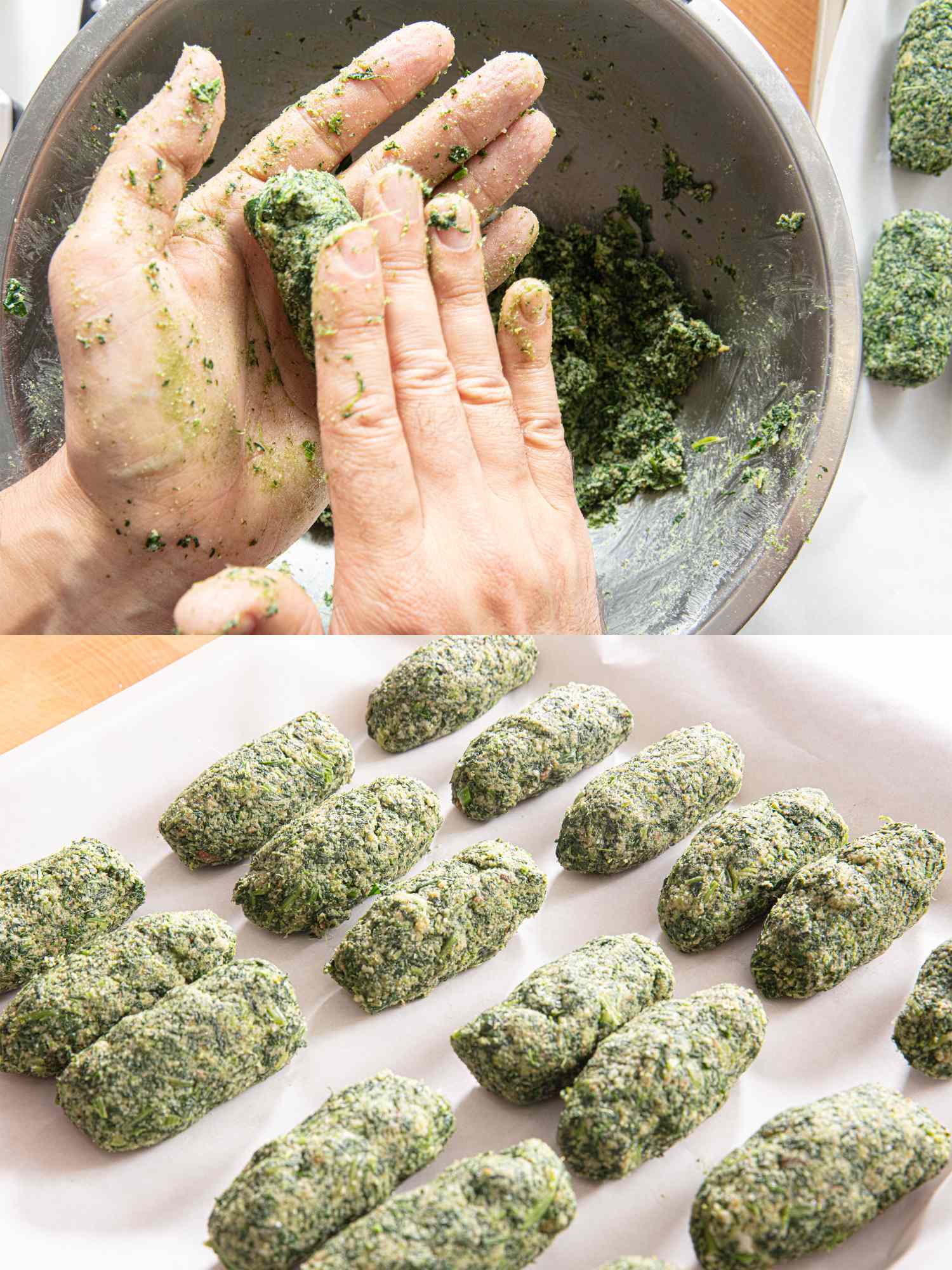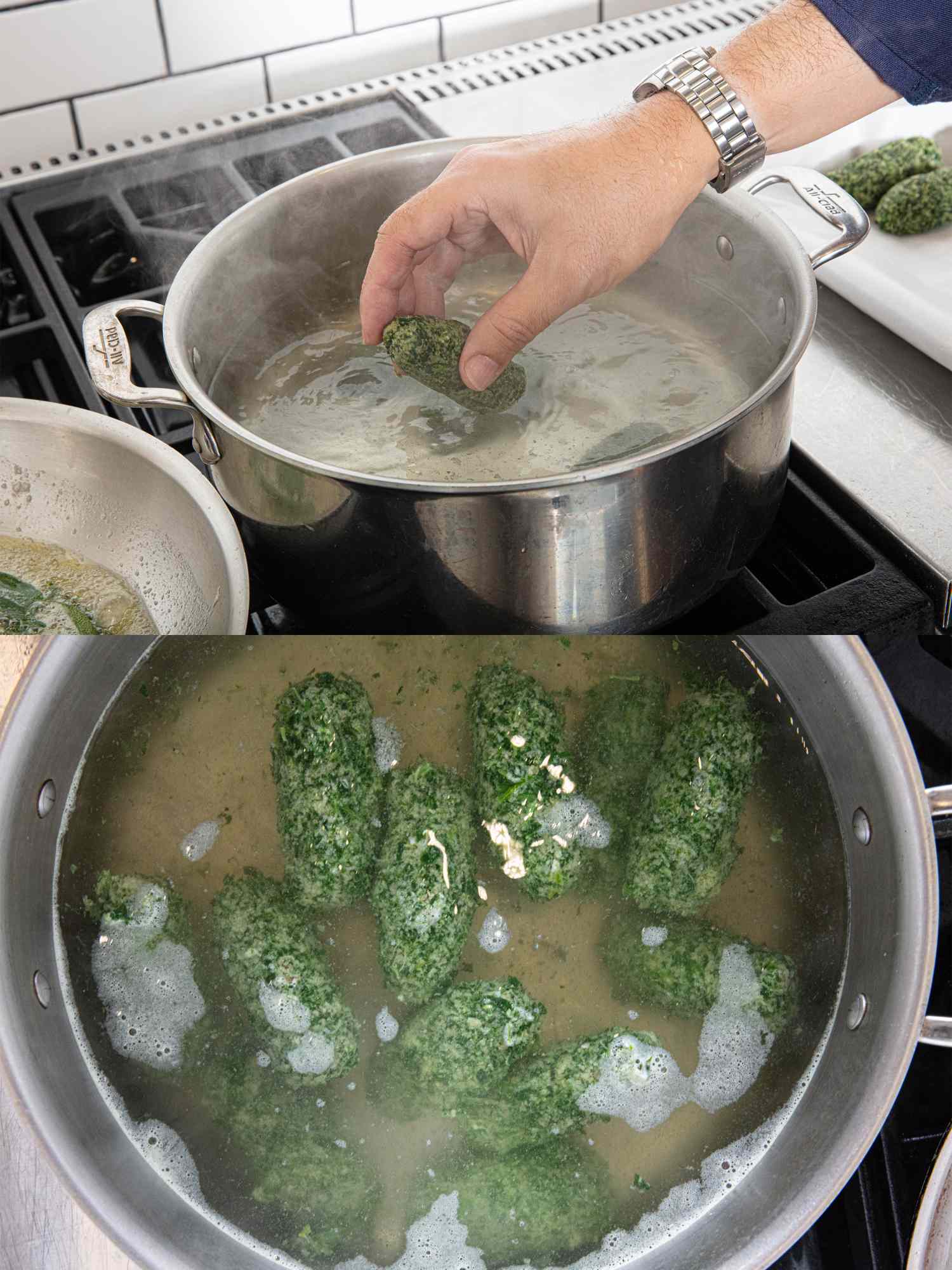I Make These Rustic Italian Dumplings Whenever I Want Something Warm and Hearty
Malfatti, which means “badly formed,” are spinach and breadcrumb dumplings from northern Italy. Humble, hearty, and comforting, they’re perfect for cold nights.
- Mature spinach (as opposed to baby spinach) is heartier and retains more structure and texture when cooked.
- A simple mixture of chopped cooked spinach, breadcrumbs, grated cheese, eggs, and seasonings comes together quickly for a hearty, flavorful, vegetable-packed meal.
There is a family of dumplings in Italy called malfatti, a name that translates as "poorly made" or "badly formed" in reference to their somewhat imperfect physical shape. Aside from being "poorly formed," though, it's hard to define precisely what malfatti are. Most English-language sources will tell you they're ricotta-and-spinach dumplings, and that's not exactly wrong, but it's far from the whole story.
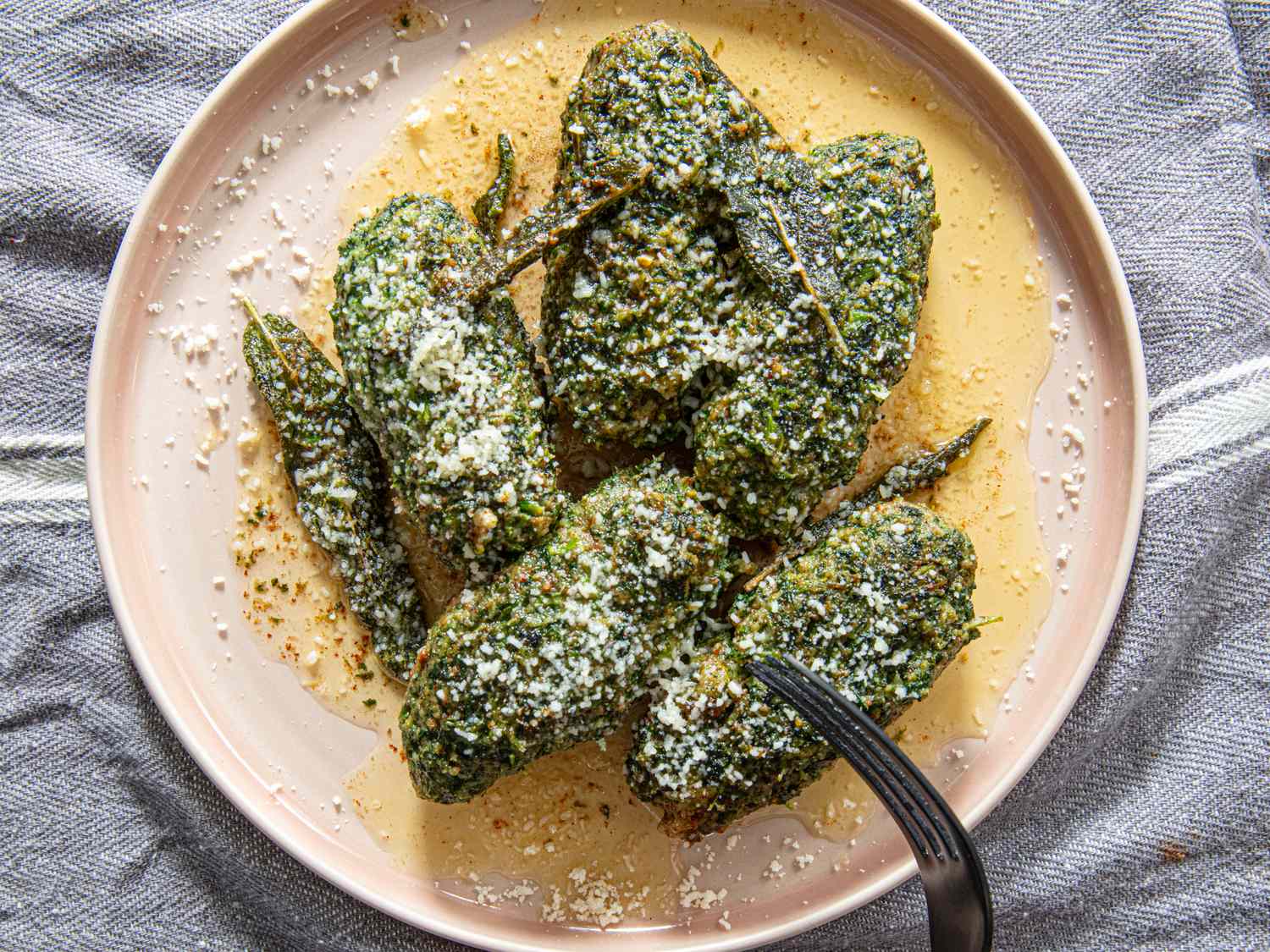
Let’s start with a basic premise: Italy has a wide variety of dumplings, which vary from region to region, town to town, and even house to house. Not only do recipes vary, but the names used for them do too. There are potato and semolina gnocchi, gnudi, canederli, strangolapreti, and more. There is, at times, substantial overlap among them; some strangolapreti recipes, for instance, are nearly indistinguishable from malfatti. This makes the job of defining malfatti difficult. Describing them more accurately than many other publications have is a messy affair, because any statement I make about them can be countered with caveats and exceptions.
Given all that, let's try to sketch it out. It is undeniable that when traveling through Italy, you can find ricotta-and-spinach dumplings called malfatti. At the same time, if we stop there and accept that as the definition, we'll end up overlooking the bigger story of what malfatti are.
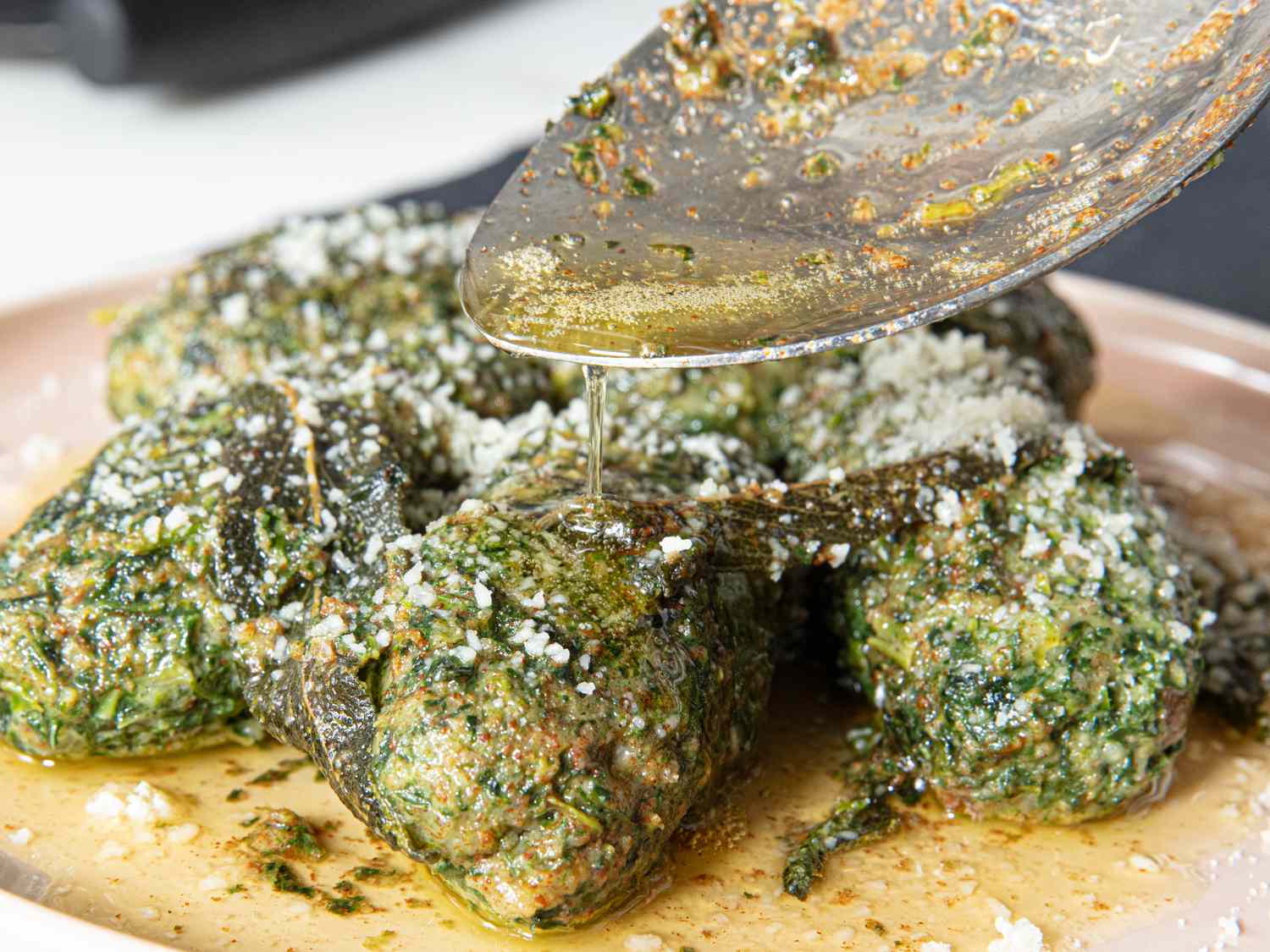
First, while ricotta-based dumplings can be referred to as malfatti, they are often called gnudi, especially in Tuscany, where they originated. Malfatti, meanwhile, have deeper associations with Lombardy in the north, and there the binding is less reliant on ricotta and instead is built on a base of breadcrumbs or stale bread. Ricotta can be present, and it sometimes is, but breadcrumbs are the more defining ingredient.
Spinach is one of the most common greens mixed into malfatti, but it’s not the only one. Some recipes call for Swiss chard, while many others use local greens specific to a particular area. I’ve seen recipes for malfatti that add crumbled amaretti (almond cookies) to the dough. Onions or garlic aren’t uncommon aromatic additions, and nutmeg is usually added as a spice. Most recipes serve the malfatti in brown butter (often with fried sage), but some plunk them into tomato sauce, or a heartier meaty ragù. Eggs bind every recipe I’ve ever seen, and cheese—most often Grana Padano, but Parmigiano-Reggiano works too—is used as a primary flavoring.
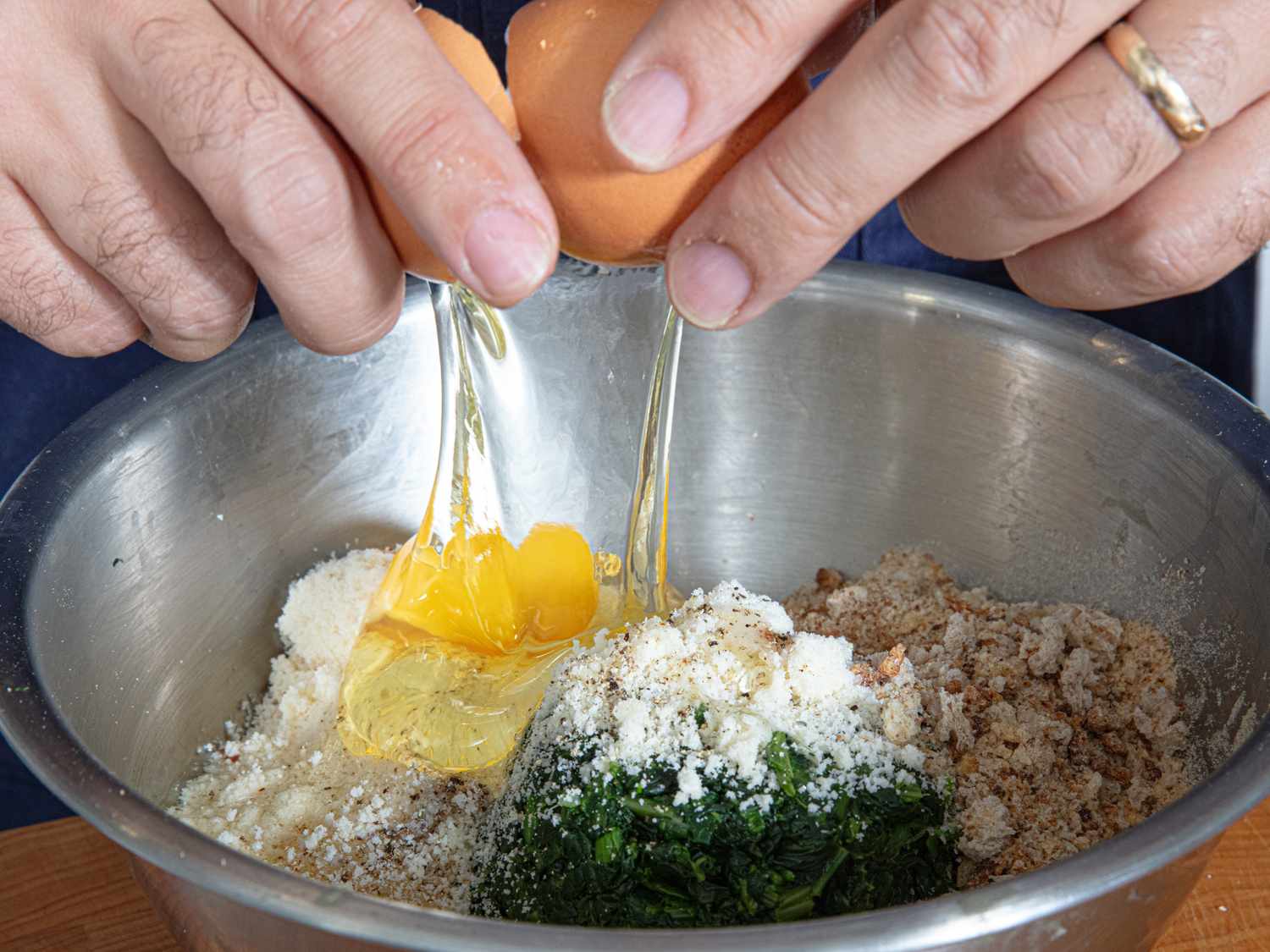
The recipe for malfatti I'm sharing here represents the Lombard tradition, although, as noted, there are many variations. Mine features a mixture of chopped cooked spinach, breadcrumbs, eggs, grated cheese, and seasonings. It is very simple but delivers on flavor and heft—you won't be hungry after eating these. And while ricotta can be added, I left it out entirely, because it really isn't a required ingredient in this style of malfatti, and just adds to the shopping list and cost.
I have just a few tips for you to ensure yours come out great.
Tips for Perfect Malfatti
The beautiful thing about something like malfatti is there's no one right way to make them; you have lots of latitude. You can alter ratios of breadcrumbs to spinach, play with the seasonings, add ricotta, and more. In the end, the only thing that matters is that the dough is sufficiently hydrated that it's not dry and crumbly, and that there's enough egg to hold it all together and prevent the dumplings from blowing out in the water. Still, these tips will help ensure success:
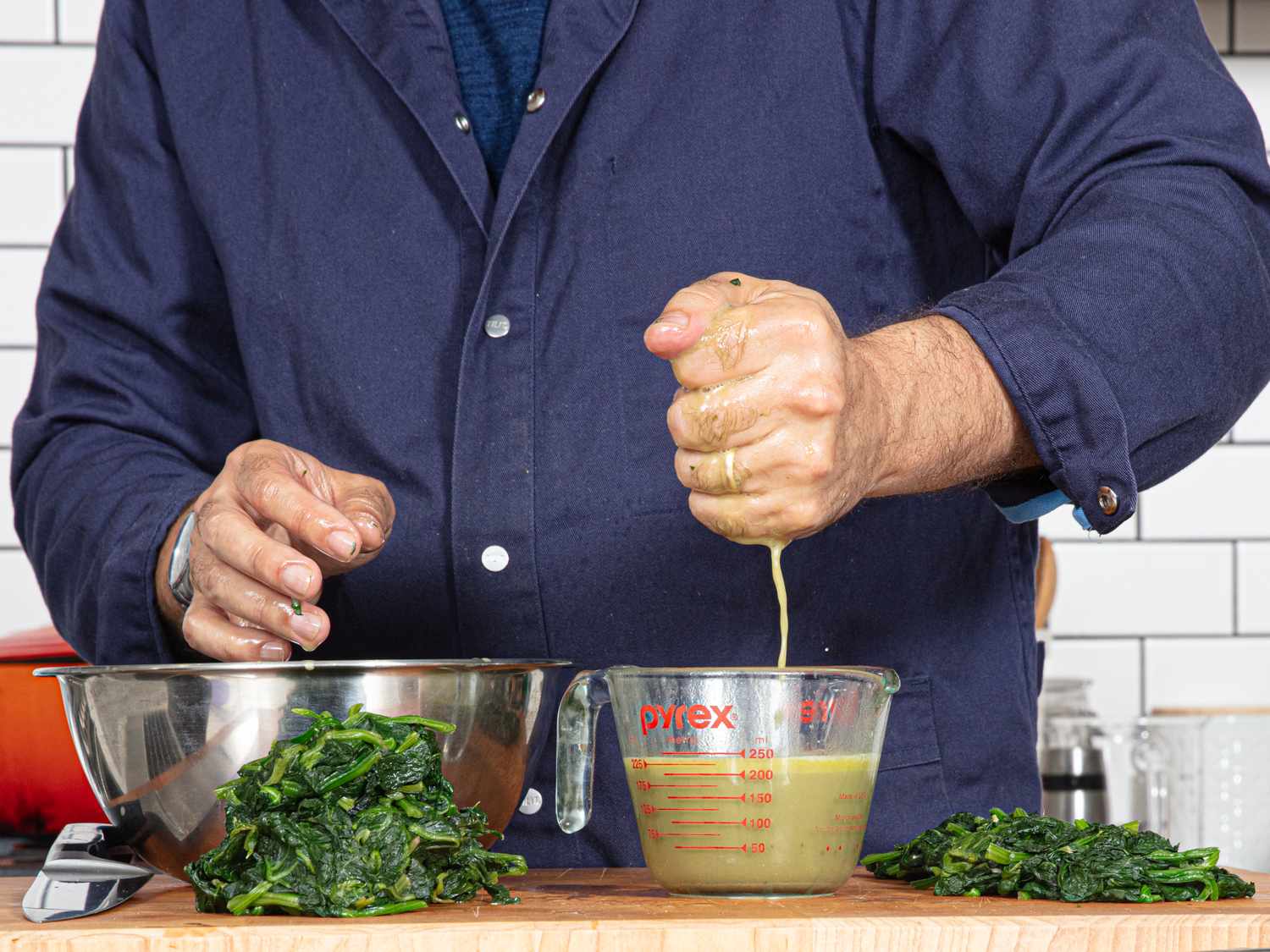
- Use mature spinach: Markets today are overrun with baby spinach, but I do not recommend it for this dish. When you cook baby spinach, it wilts down to a texture that is overly wet and mushy. Mature spinach is more of a chore, I know—you have to wash it repeatedly to remove sand—but it's more delicious and produces a better, more substantive texture that you need for these malfatti to be their best.
- Alternatively, use frozen spinach: Frozen spinach is a great time-saver here, since it's made from mature spinach and is already cooked down. I was careful to measure and weigh my spinach at every point in the recipe development process, so substituting frozen spinach should be pretty easy: Use roughly the same squeezed-dry weight of thawed frozen spinach as the squeezed-dry cooked spinach in the recipe.
- Or use a different green: Feel free to change the greens here. Look for something substantial but still tender when cooked. Swiss chard, dandelion, escarole, and other greens can work.
- Breadcrumbs are easiest, but stale bread works too: Breadcrumbs are more or less ready to go for this recipe, but if you have stale bread kicking around, you can also use it. Either blitz it in a food processor to turn it into breadcrumbs, or save some of the liquid collected from squeezing the cooked greens dry and use it to moisten the stale bread and help break it down into a panade.
- Make a tester dumpling before cooking them all: To check the seasoning in the malfatti mixture, simmer one small ball of it, then taste. This is better than cooking the whole batch only to realize they need more salt.
- Simmer, but don't boil, the malfatti: The dumplings are fragile, so if the water is at a rolling boil, it may toss the malfatti around too much and cause them to break apart. You want a gentle simmer, hot enough to poach them but not treat them as if the pot were a mosh pit.
- Expect some blowout, but not too much: It's normal for malfatti to slough off a small amount of spinach and breadcrumbs as they cook. The water won't remain clear, but the malfatti should hold together. If they don't, consider adding an extra egg to help bind them (I did not need an extra egg in my recipe development and testing, but breadcrumbs and wrung-out cooked spinach can vary from batch to batch, so some folks at home may need an extra egg to keep things together).
- Work in batches: This recipe makes a generous amount of malfatti, more than you may want to eat all at once. That's OK! You can refrigerate or freeze the rest and cook them later. If you do make them all at once, be sure to cook them in batches and note that you may need to finish them in more than one pan of butter sauce, depending on the size of your pan.
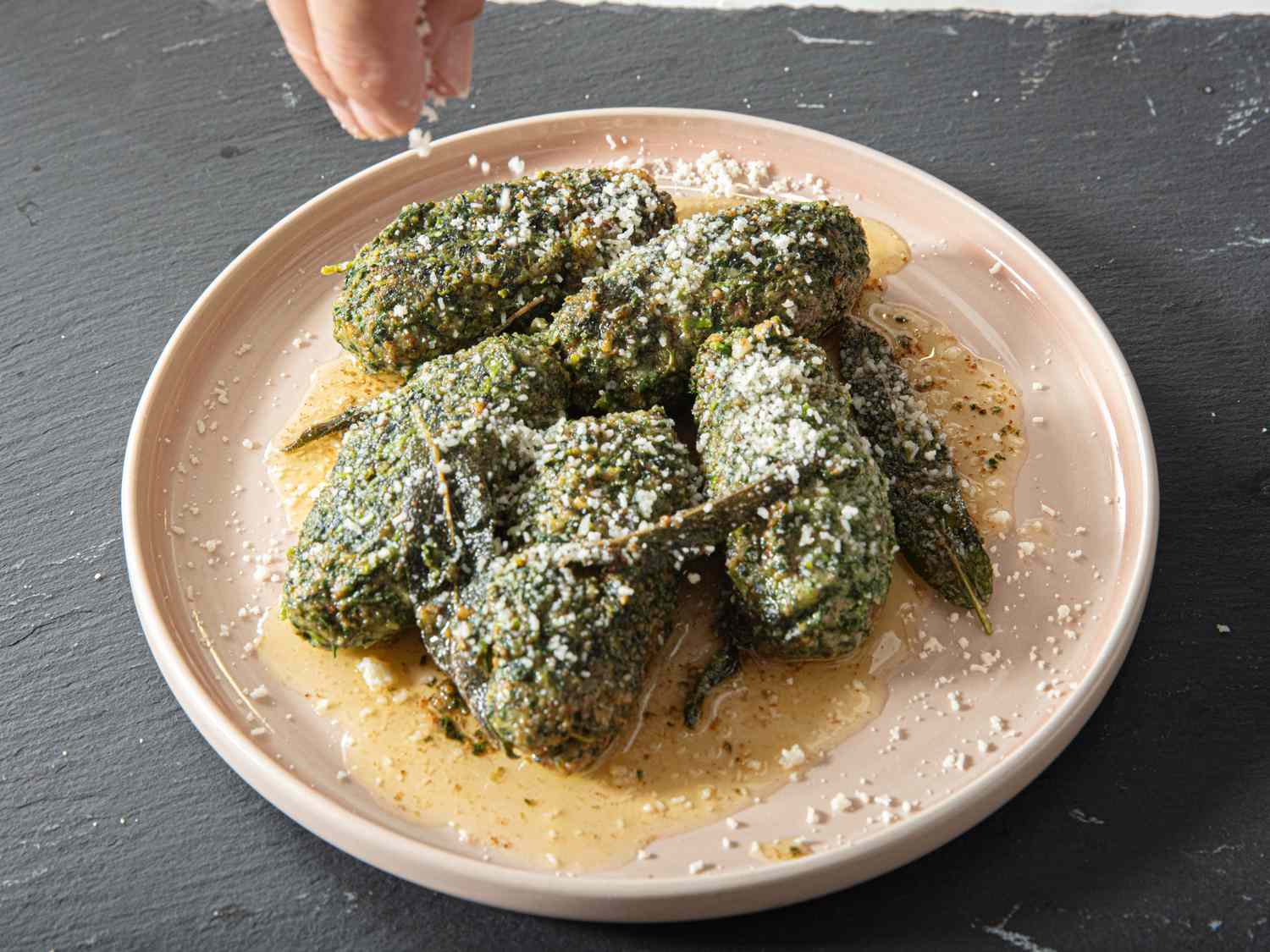
Recipe Details
I Make These Rustic Italian Dumplings Whenever I Want Something Warm and Hearty
Save Print Cook Mode (Keep screen awake)
Ingredients
-
1 stick plus 2 tablespoons (140 g) unsalted butter, divided
-
1 medium clove garlic, lightly smashed
-
1 3/4 pounds (793 g) mature spinach, well washed and stem ends trimmed if necessary (see notes)
-
Kosher salt
-
1/2 cup breadcrumbs (2 3/4 ounces; 75 g)
-
1 packed cup finely grated Grana Padano or Parmigiano-Reggiano (4 ounces; 113 g), plus more for serving
-
2 large eggs
-
Freshly grated nutmeg
-
Freshly ground black pepper
-
Small handful (about 10) fresh sage leaves
Directions
-
In a large pot or Dutch oven, melt 2 tablespoons (28 g) butter over medium heat with garlic until butter begins to foam. Add spinach a few handfuls at a time, tossing to wilt and adding more spinach as room becomes available, until all the spinach is in the pot. Season lightly with salt, then cook until spinach is fully wilted down and tender, about 5 minutes. Discard garlic and transfer spinach to a large mixing bowl to cool slightly (you should have about 3/4 to 1 pound of cooked spinach).
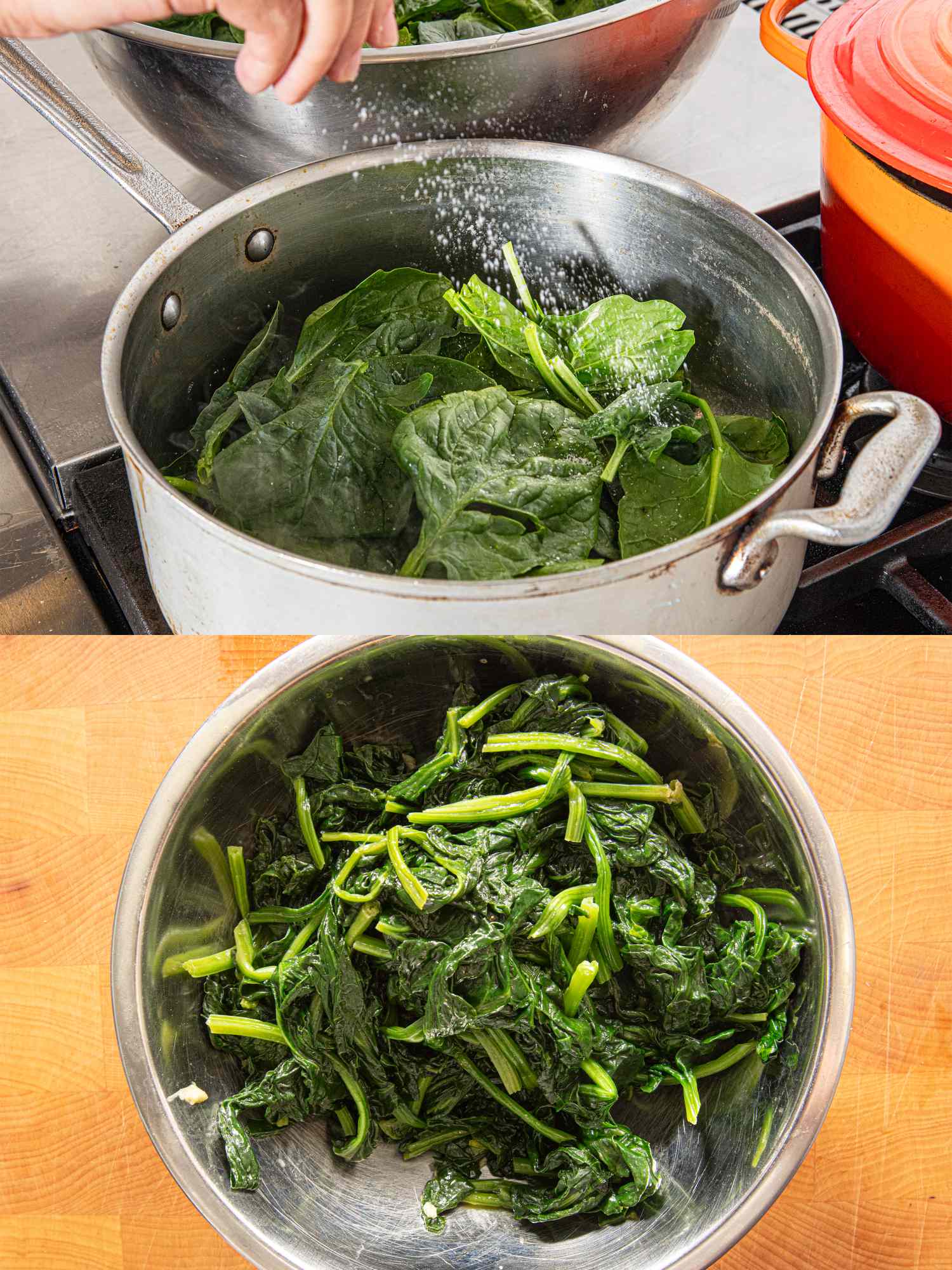
-
Without rinsing pot, fill with water and bring to a simmer. Meanwhile, when spinach is cool enough to handle, pick up a handful at a time and squeeze it firmly between your hands to remove excess liquid, then transfer the squeezed spinach to a work surface. When all the spinach is squeezed, chop it finely, then return it to the large mixing bowl. (After squeezing and chopping, the spinach should weigh 10 to 12 ounces and fill about 1 1/2 packed cups.)
![A person is preparing kale mixing in a bowl and chopping it on a wooden board]()
-
Add breadcrumbs, grated cheese, eggs, a generous grating of fresh nutmeg, and a generous grinding of black pepper. Season with salt, then, using your hands, thoroughly mix the malfatti mixture until very well incorporated. In the simmering water, cook a very small ball of the mixture until it floats, then taste and adjust seasoning as needed.
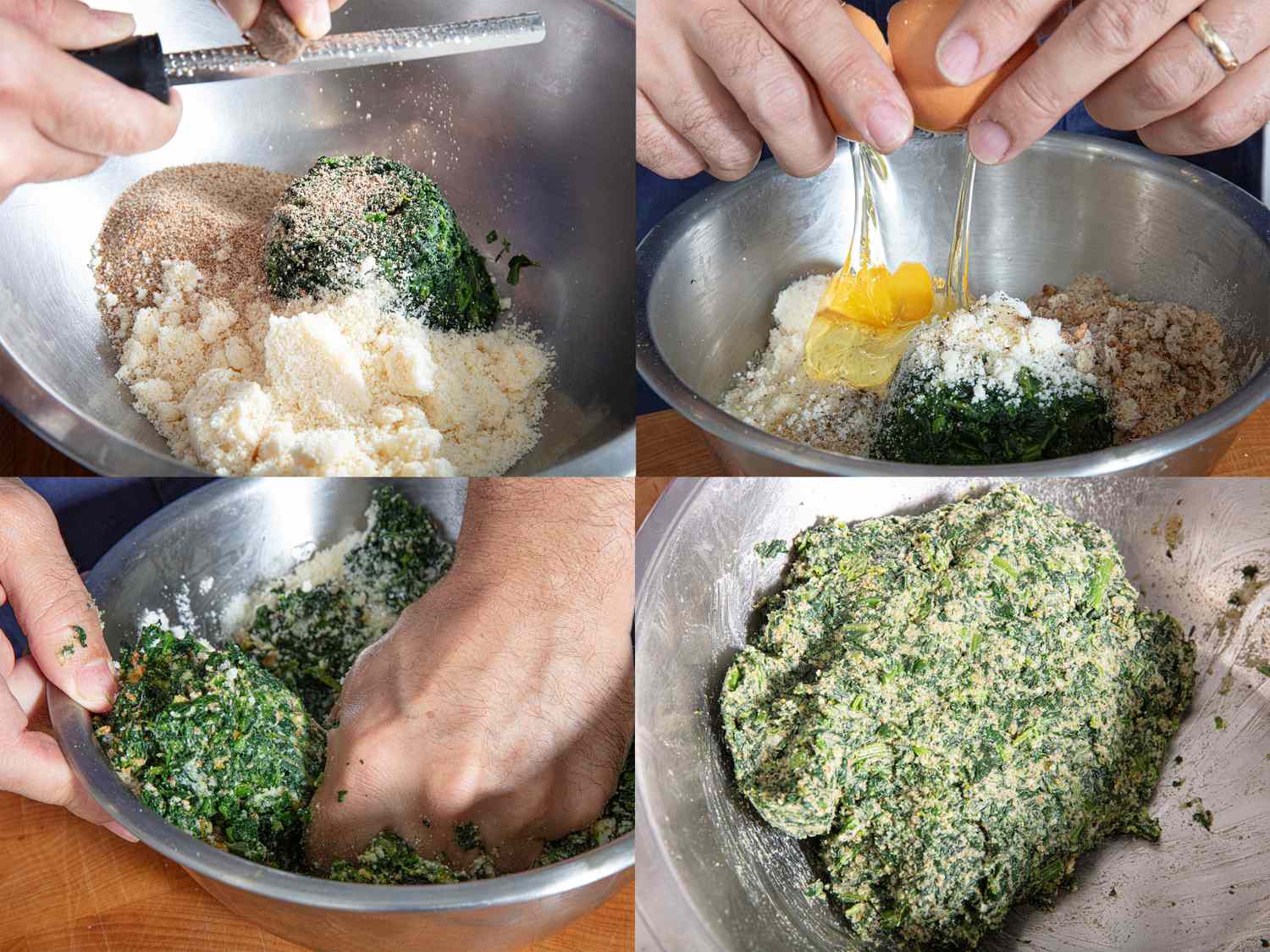
-
Using your hands, form malfatti dough into tightly packed individual cylinders or torpedos about 1/2 inch thick and 2 inches long (though they can be a range of sizes, from smaller sticks to hefty dumplings), and arrange on a parchment-lined baking sheet.
![Two images of spinach dumplings being formed by hand and arranged on a tray]()
-
When ready to cook malfatti, melt remaining 1 stick butter over medium heat in a large skillet until foaming. Add sage and fry, swirling pan often, until milk solids in butter turn a light brown color. Remove from heat and season lightly with salt.
Note: This recipe makes a generous amount of malfatti and you may not want to cook them all at once; in fact, it's possible your skillet own't be big enough to accomodate the full batch in the butter sauce at one time, so you may want to divide the butter across two large pans if you're cooking the malfatti all at once, or cook what you plan to eat and save the rest for later (see make-ahead instructions below).
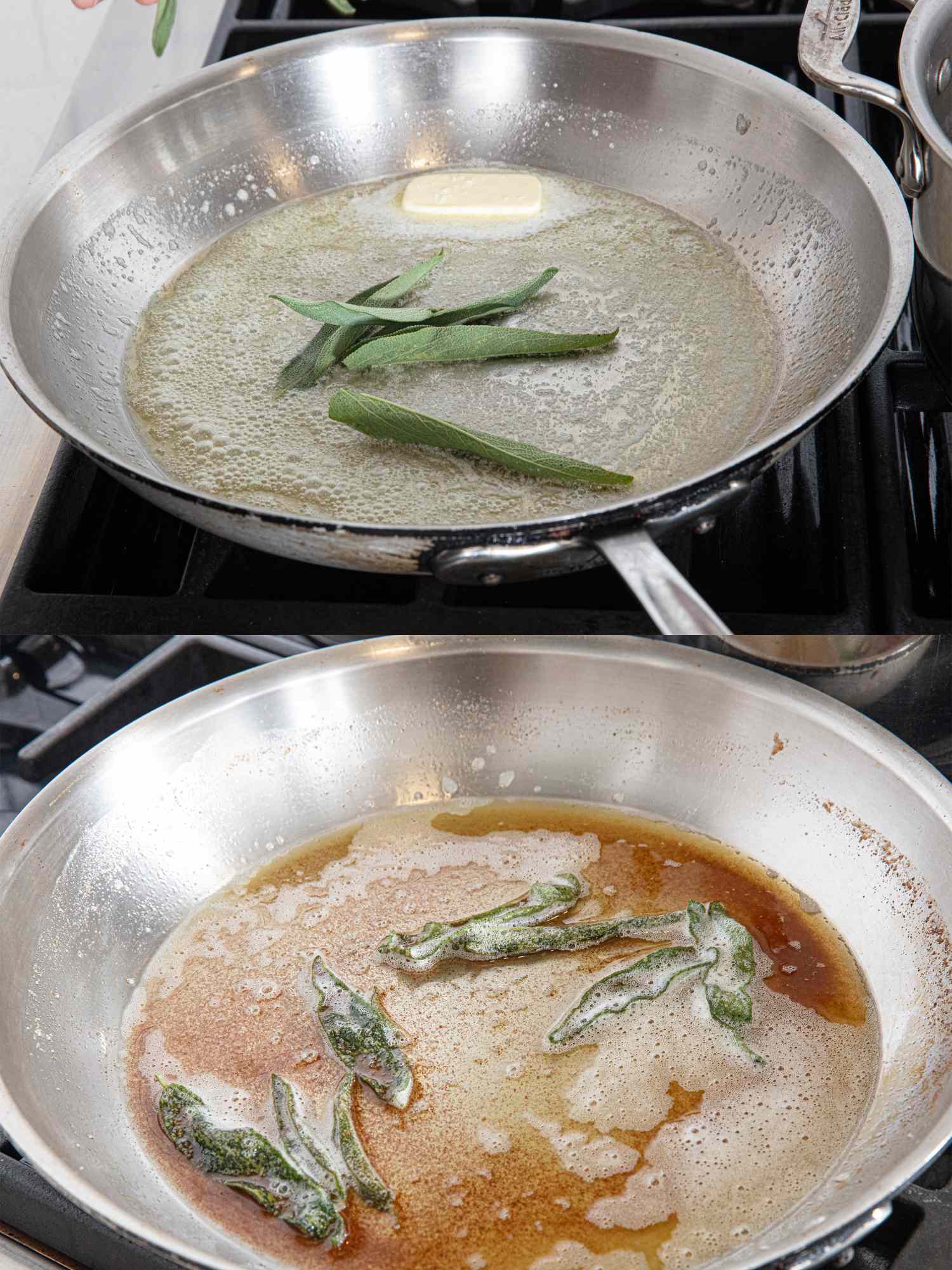
-
In the pot of gently simmering water, add malfatti in batches, making sure not to overcrowd pot, and cook until all the malfatti are floating. Using a slotted spoon or spider skimmer, transfer malfatti to butter sauce. Repeat with the remaining malfatti. Note that it's important for the water to be at a gentle simmer; if it's boiling rapidly, it may break the malfatti (it's normal for the malfatti to slough off some bits of spinach and breading into the water, but they should hold together).
![A hand placing spinach dumplings into a boiling pot of water with another image below showing the dumplings cooking in the pot]()
-
Warm malfatti in the butter sauce, then carefully transfer to serving plates, spooning butter sauce and sage leaves on top and sprinkling with grated cheese.
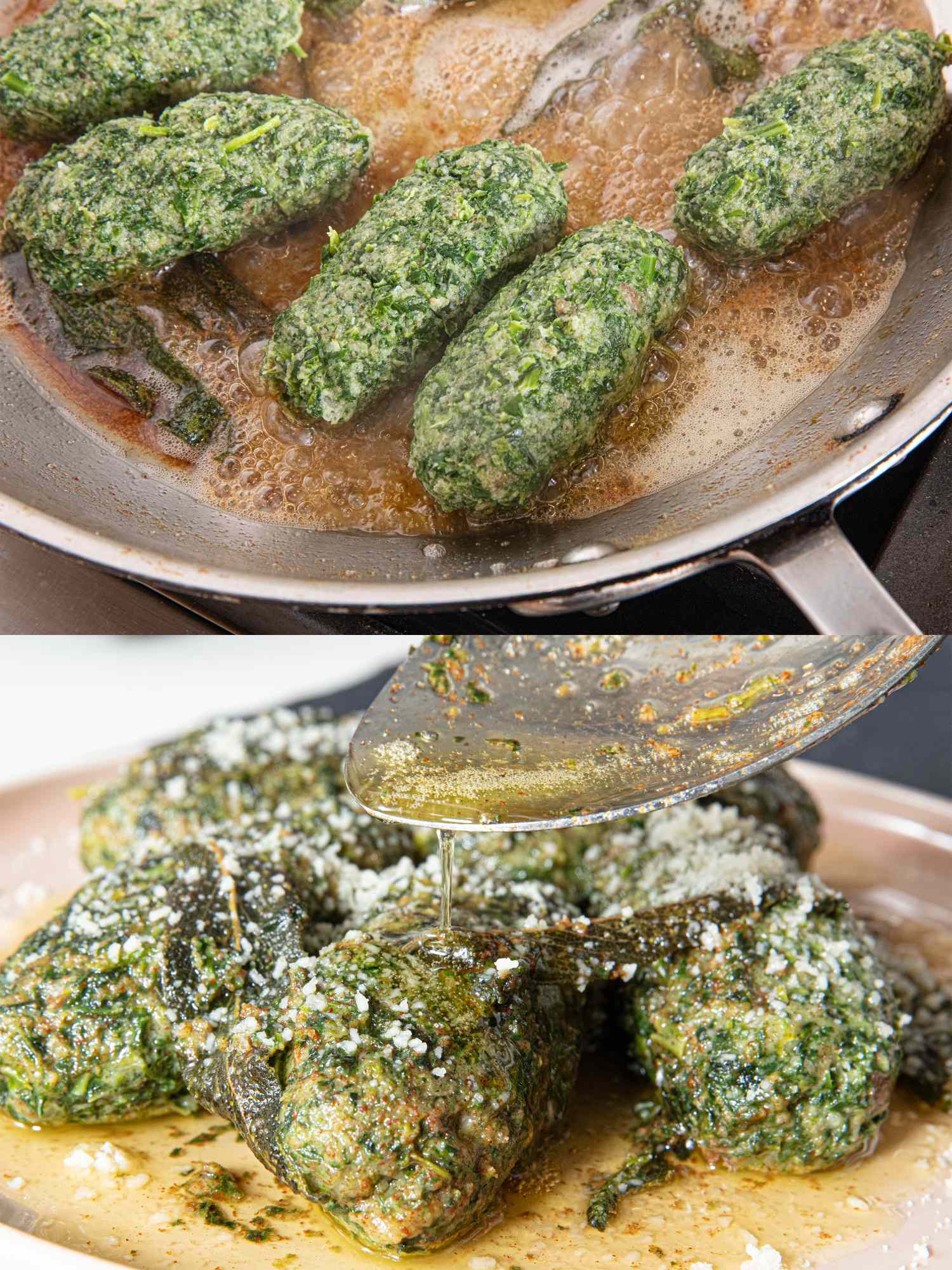
Notes
You can use frozen spinach in this recipe; since it's already cooked, you will need about 1 pound of it. Defrost the spinach, then cook it gently in the 2 tablespoons butter with garlic as directed, then cool, squeeze with your hands, and proceed with the recipe as written.
Do not use baby spinach in this recipe; it cooks down into slippery whisps that do not work well here.
Make Ahead and Storage
The malfatti mixture can be made up to 8 hours in advance, then covered and refrigerated until ready to form. Alternatively, it can be formed, arranged on a parchment-lined baking sheet, wrapped in plastic, and refrigerated for up to 8 hours before cooking.
The formed, uncooked malfatti can also be frozen on the baking sheet, then transferred to a zipper-lock freezer bag and kept frozen for up to 3 months. Cook from frozen, waiting for them to float to the surface of the simmering water and giving them an extra minute or two to fully heat through.
- Recipes
- Italian
- Mains
- Comfort Food
- Vegetarian Mains


